Twenty-five years ago, Zaha Hadid Architects came to international prominence for a hilltop spa and leisure club called The Peak that was never built in Hong Kong. More recently in 2008 Zaha Hadid Architects was appointed to design a new project for the Hong Kong Polytechnic University, the result being Innovation Tower.
Innovation tower is a 76 meter-high building that is designed to house the institution’s design school. This project, along with several others, is part of a strategy to turn Hong Kong into a leading design hub in Asia. In total the building’s 12,000 square meters will provide enough space to teach and train 1,500 students at a time in the art of design.
In true Zaha Hadid Architects form, the building further explores architecture represented as seamless fluidity. The building is conceived as a variant of the tower and podium typology, with the concrete podium and louvered tower united by flowing forms to form a singular piece of architecture. The final result aims to stimulate a vision of possibilities for the future whilst reflecting the history of the institution. More details from the architects after the jump.
The Jockey Club Innovation Tower (JCIT) is home to the Hong Kong Polytechnic University (PolyU) School of Design, and the Jockey Club Design Institute for Social Innovation.
The 15-storey, 15,000 sq m. tower accommodates more than 1,800 students and staff, with facilities for design education and innovation that include: design studios, labs and workshops, exhibition areas, multi-functional classrooms, lecture theater and communal lounge. The Hong Kong Polytechnic University campus has developed its urban fabric over the last 50 years with the university’s many faculties housed in visually coherent, yet very different buildings
The JCIT creates a new urban space that enriches the diversity of university life and expresses the dynamism of an institution looking to the future. Located on a narrow, irregular site at the northeastern tip of the university campus (bordered by the university’s football ground to the south, and the Chatham Road/ Kowloon Corridor motorway interchange to the north), the JCIT is connected to the heart of the campus; encouraging the university’s various faculties and schools to develop multidisciplinary initiatives and engagement with the community, government, industry, NGO’s and academia. The JCIT design dissolves the typical typology of the tower/podium into a more fluid composition. Interior and exterior courtyards create informal spaces to meet and interact, complementing the large exhibition forums, studios, theater and recreational facilities.
The tower’s design promotes a multidisciplinary environment by connecting the variety of programs within the School of Design; establishing a collective research culture where many contributions and innovations can feed off each other. Students, staff, and visitors move through 15 levels of studios, workshops, labs, exhibition and event areas within the school. Interior glazing and voids bring transparency and connectivity, while circulation routes and communal spaces have been arranged to encourage interaction between the many learning clusters and design disciplines. With its contribution of HK$249 million towards the construction of JCIT, The Hong Kong Jockey Club Charities Trust also funds the Jockey Club Design Institute for Social Innovation.
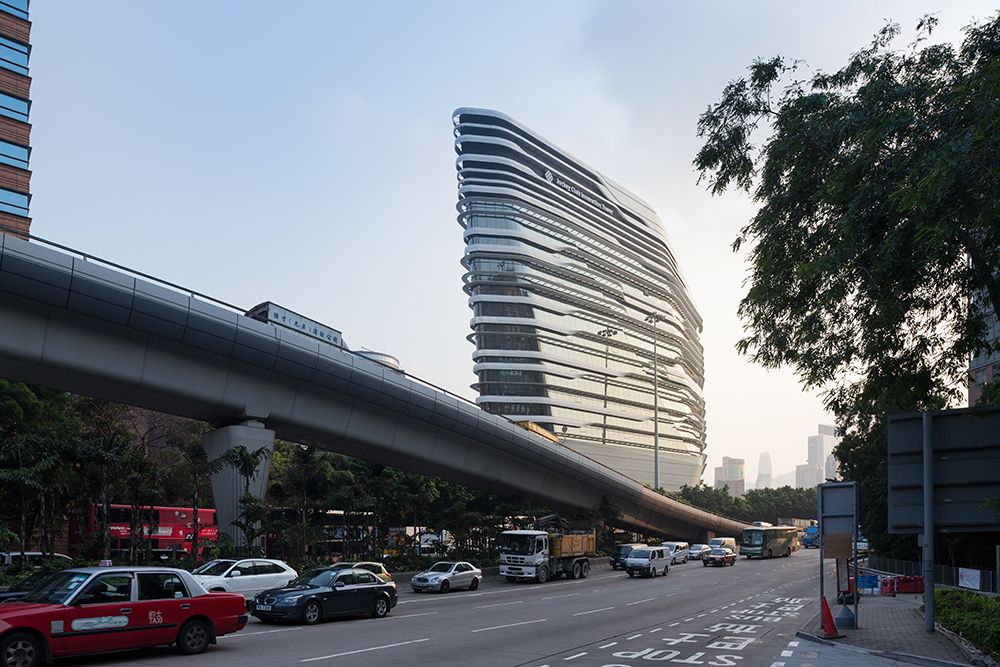
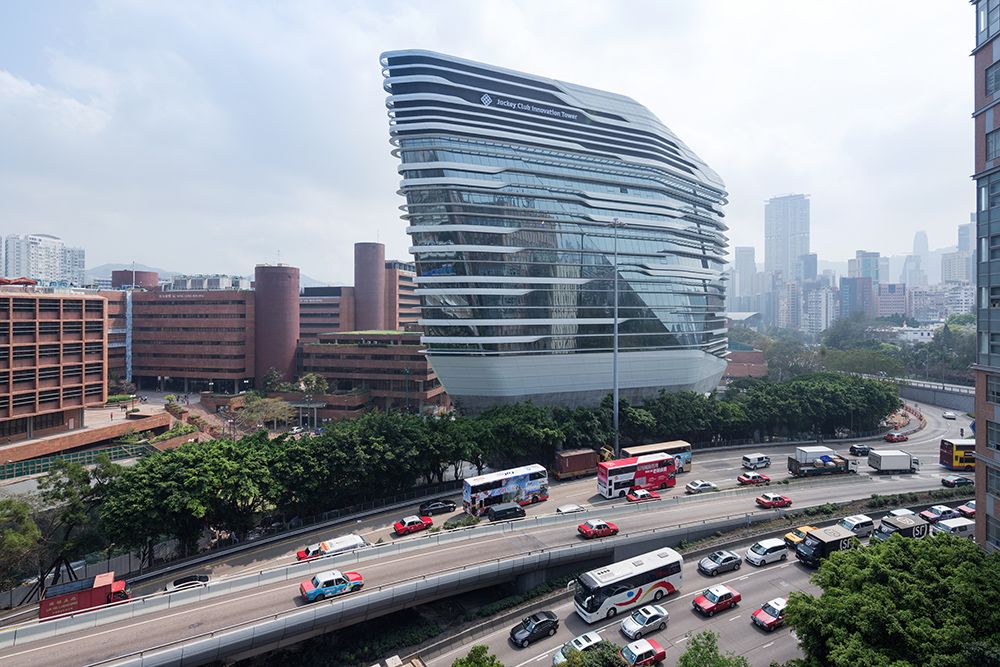
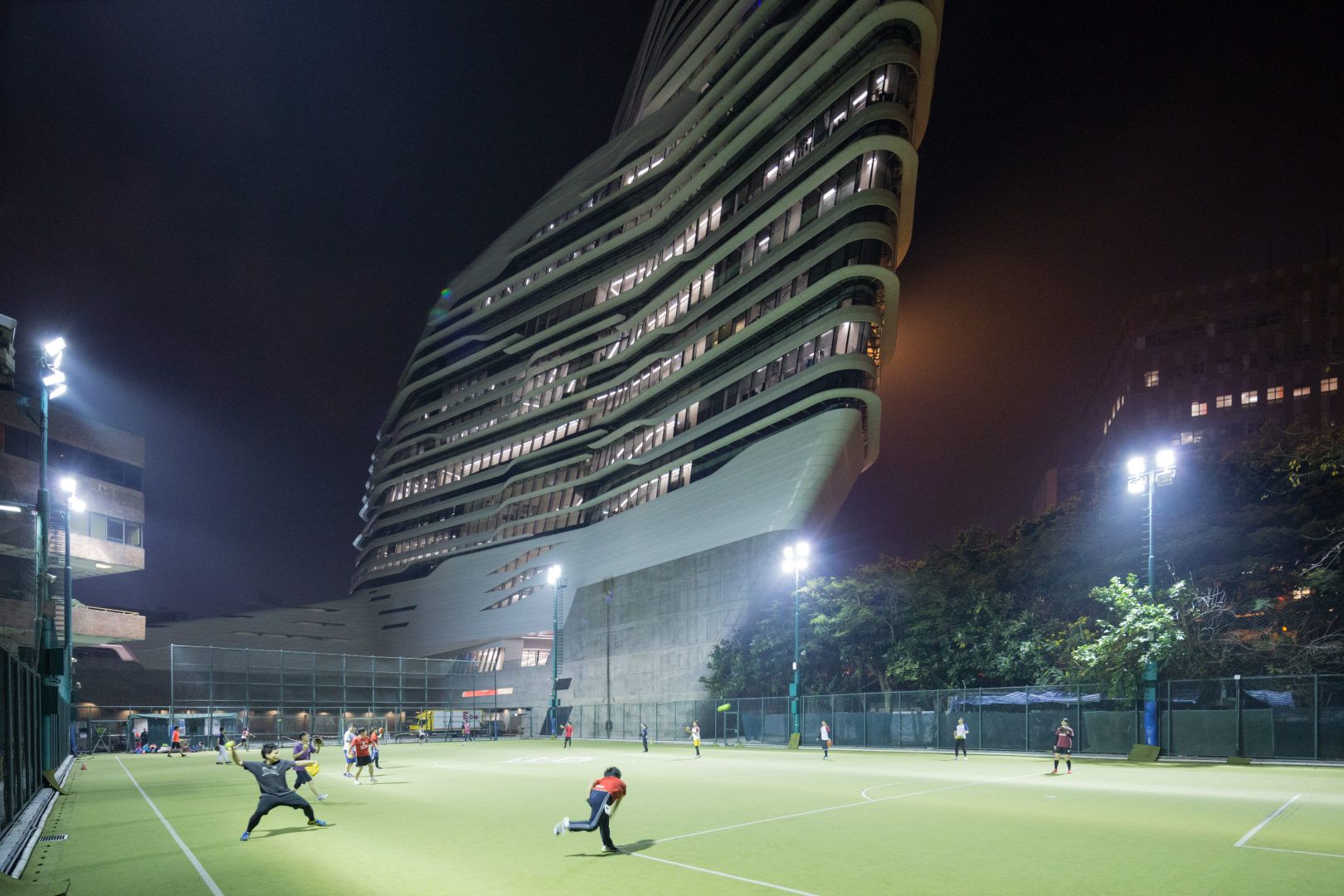
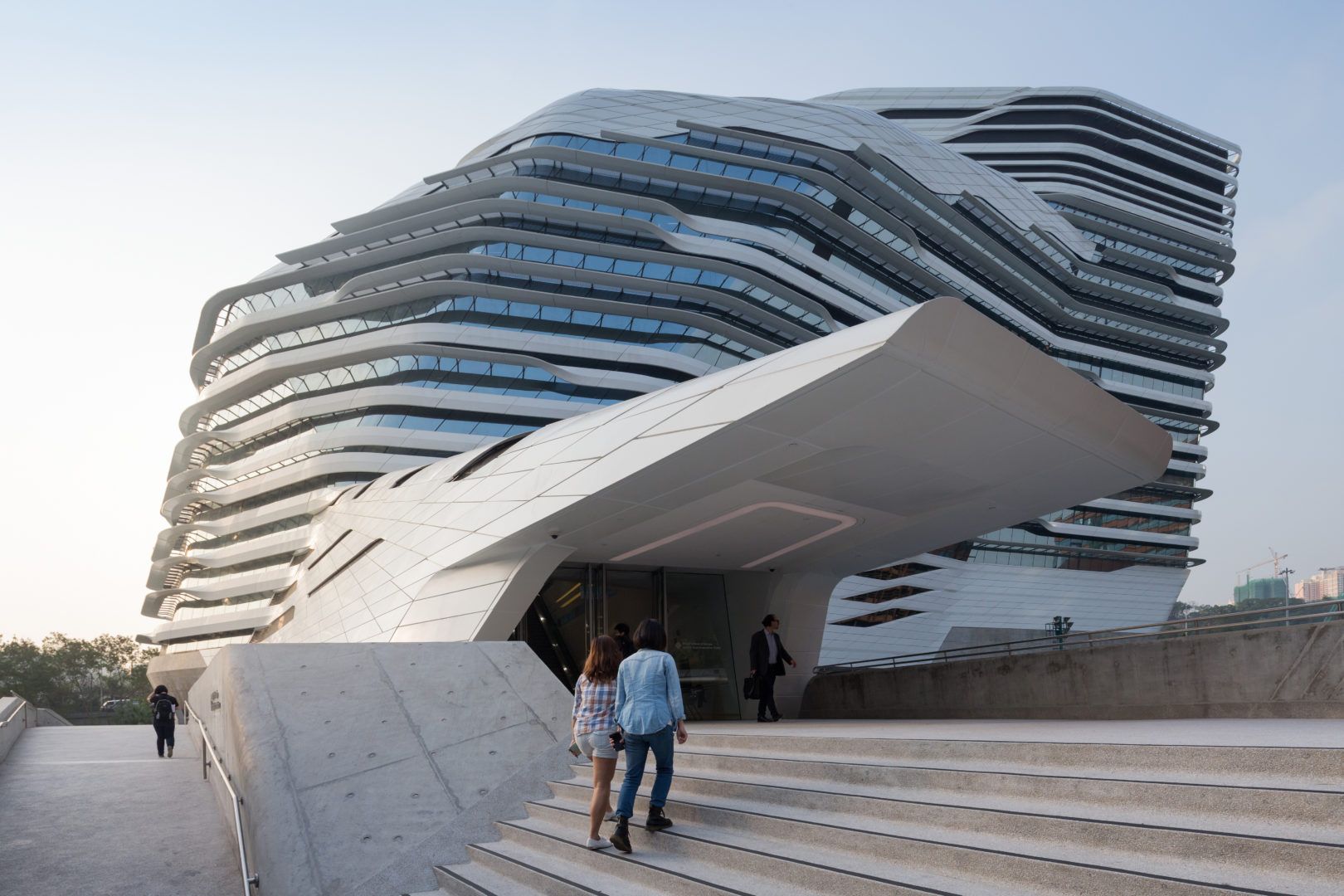
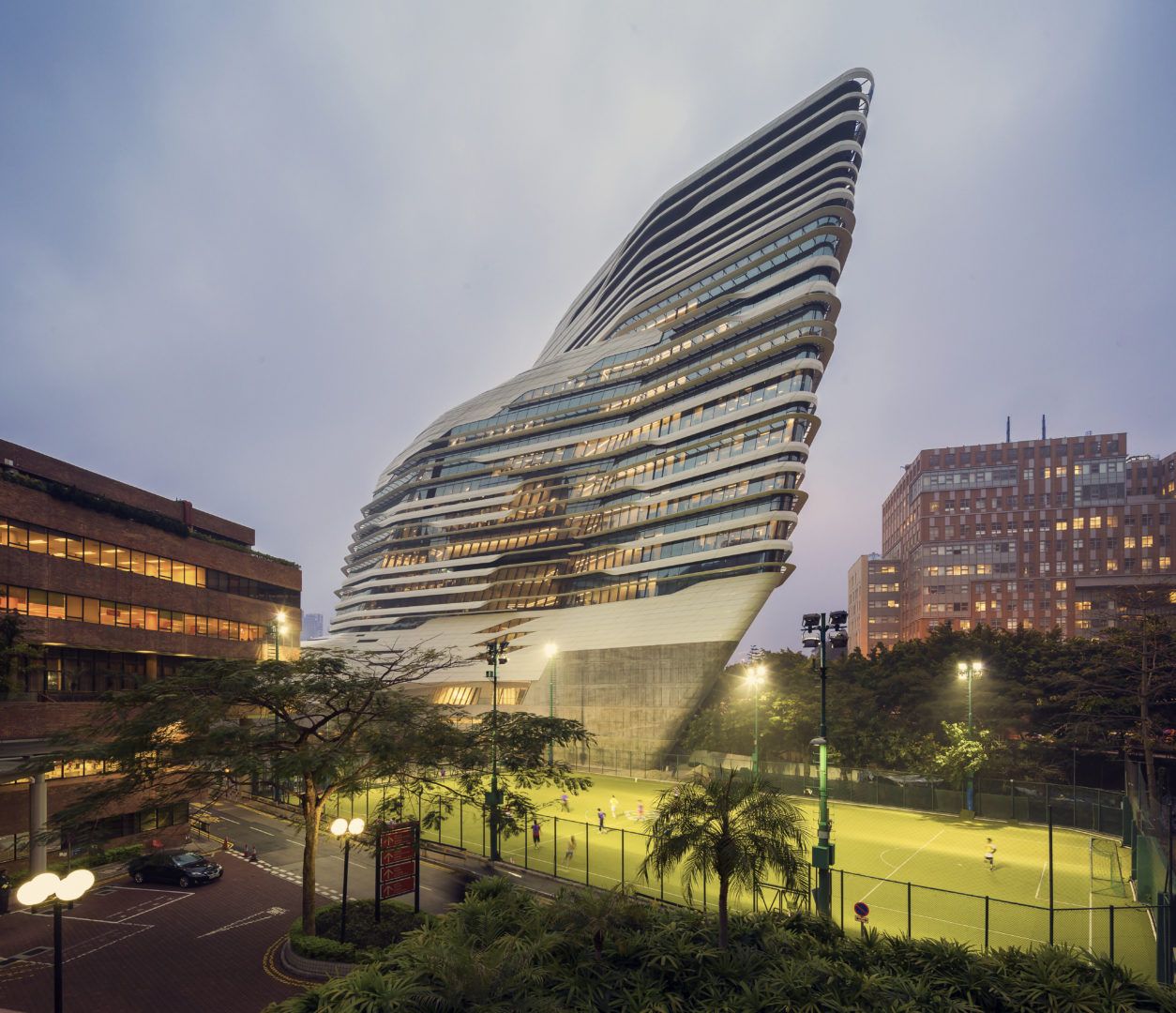
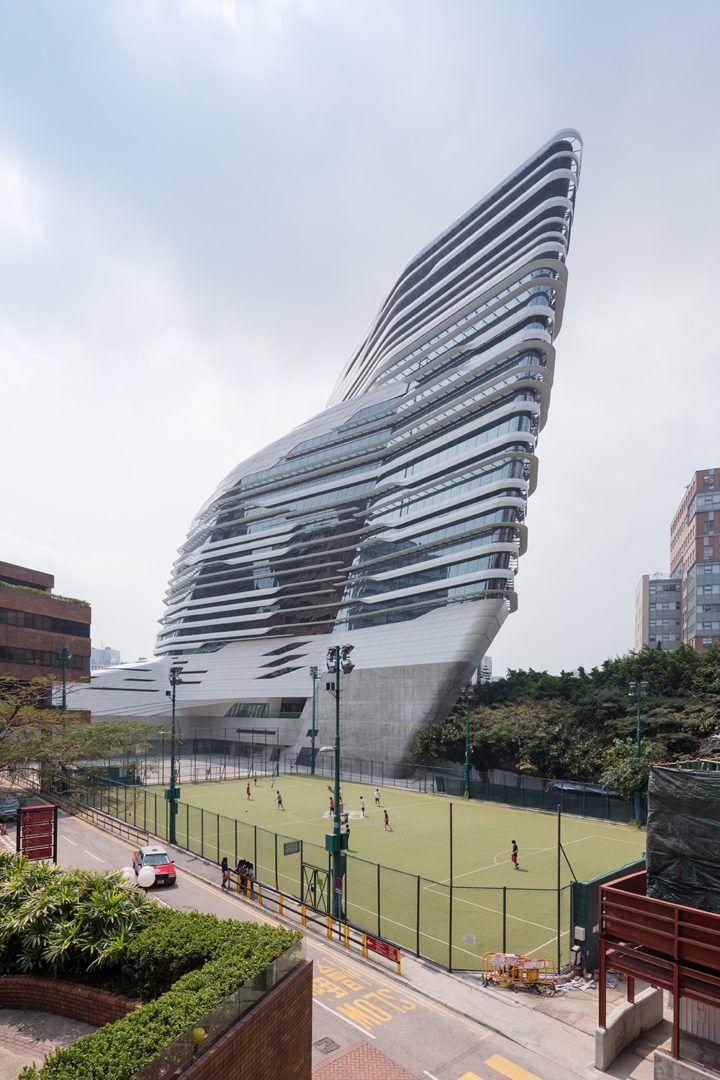
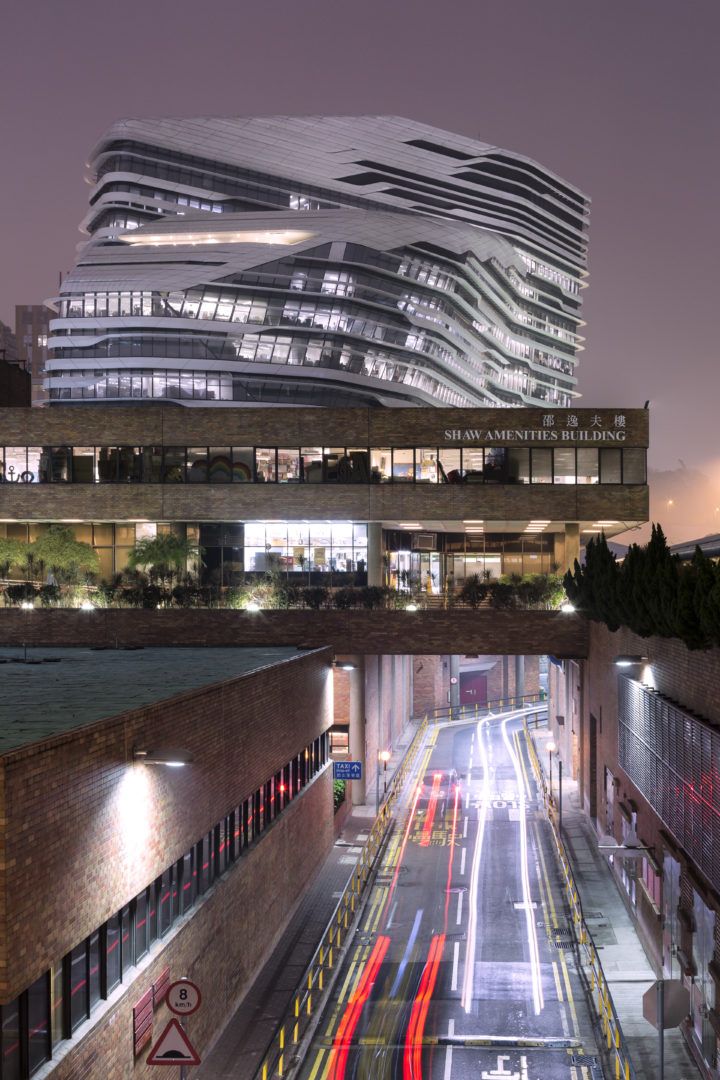
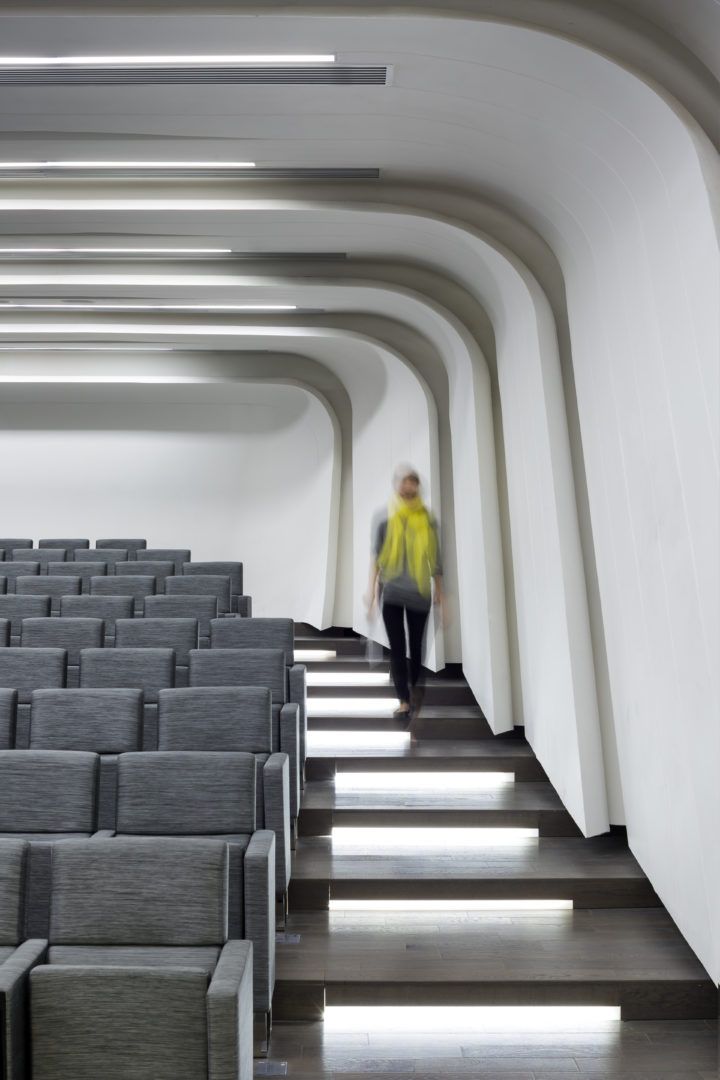
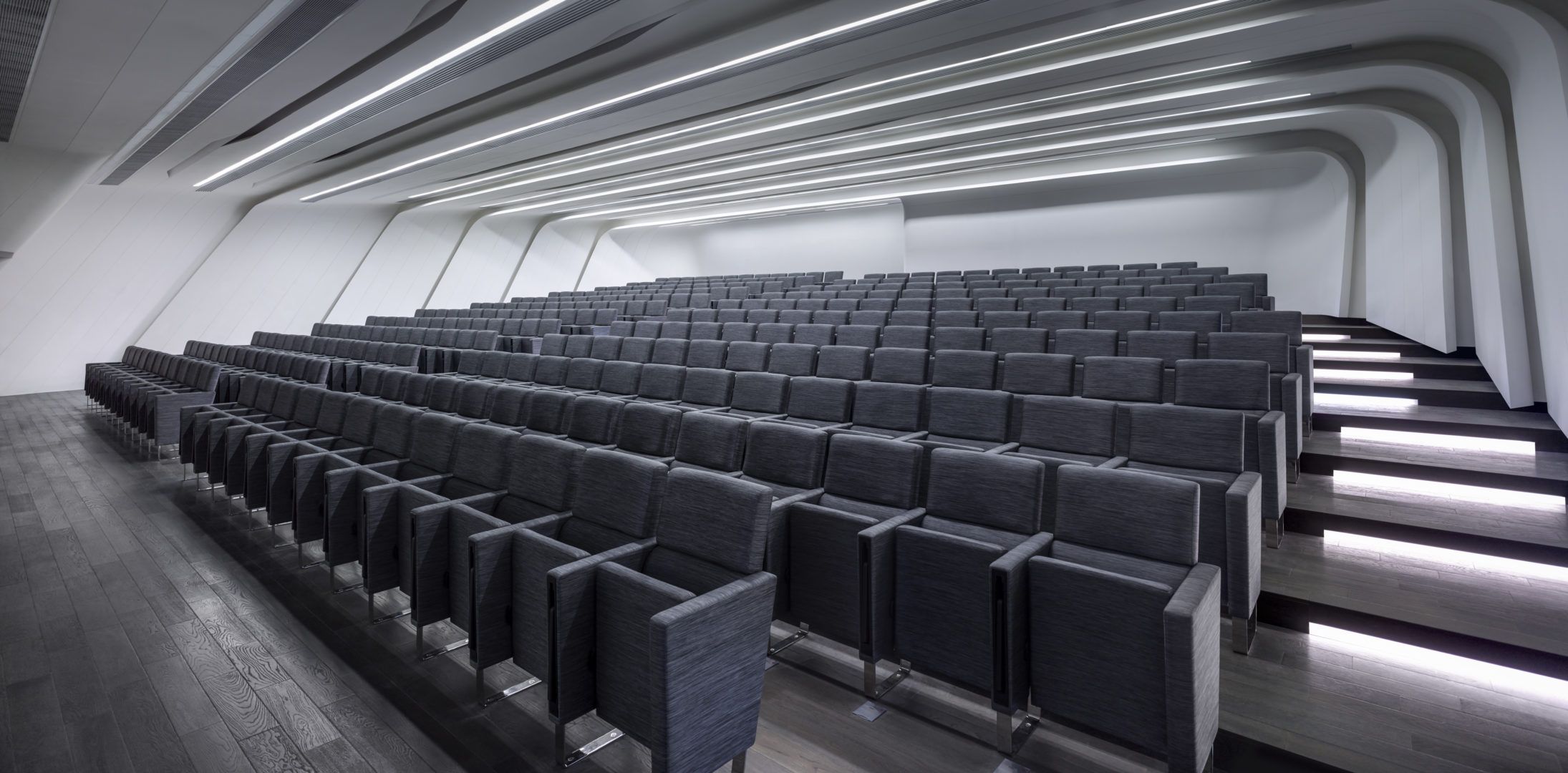
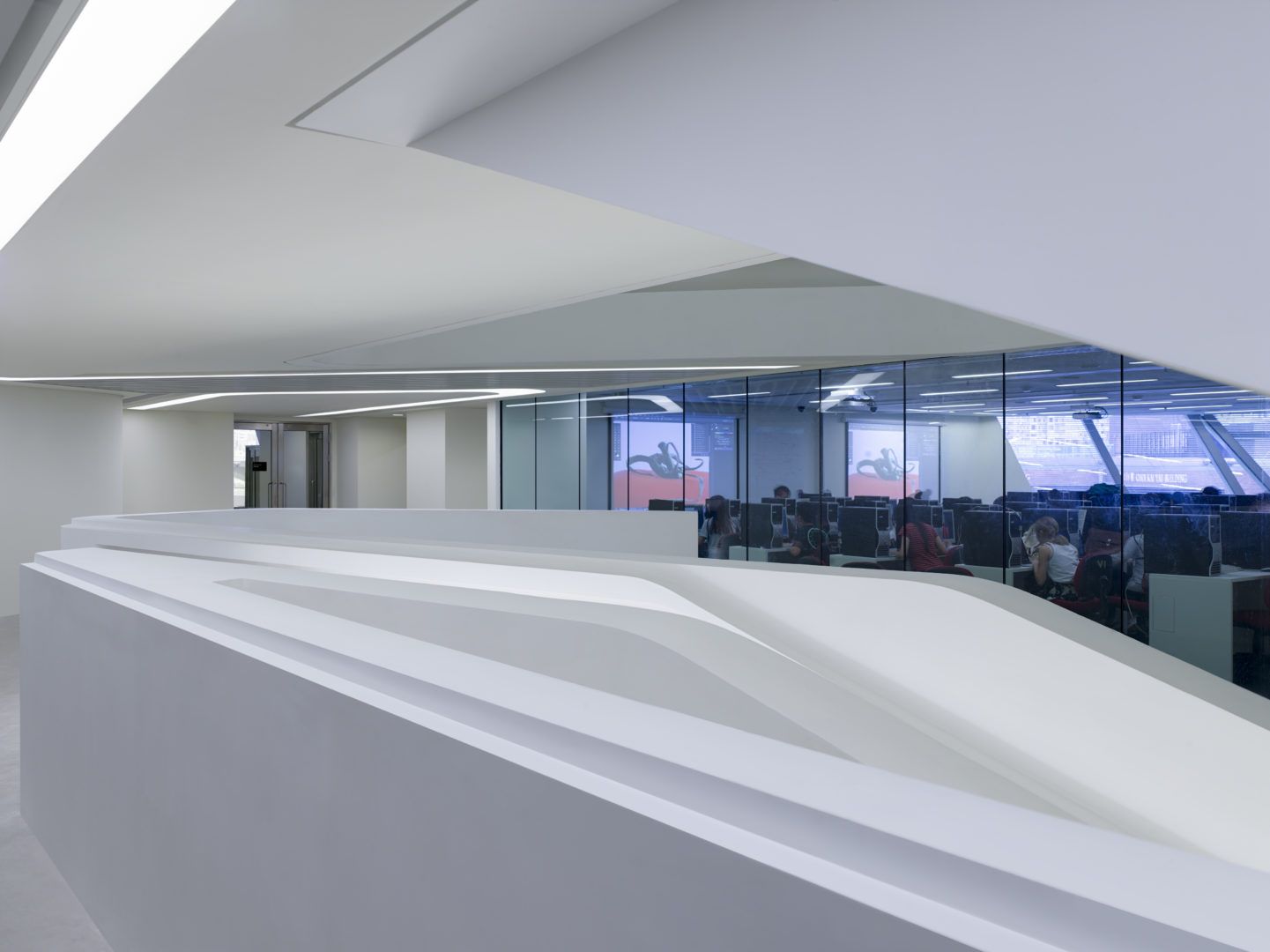
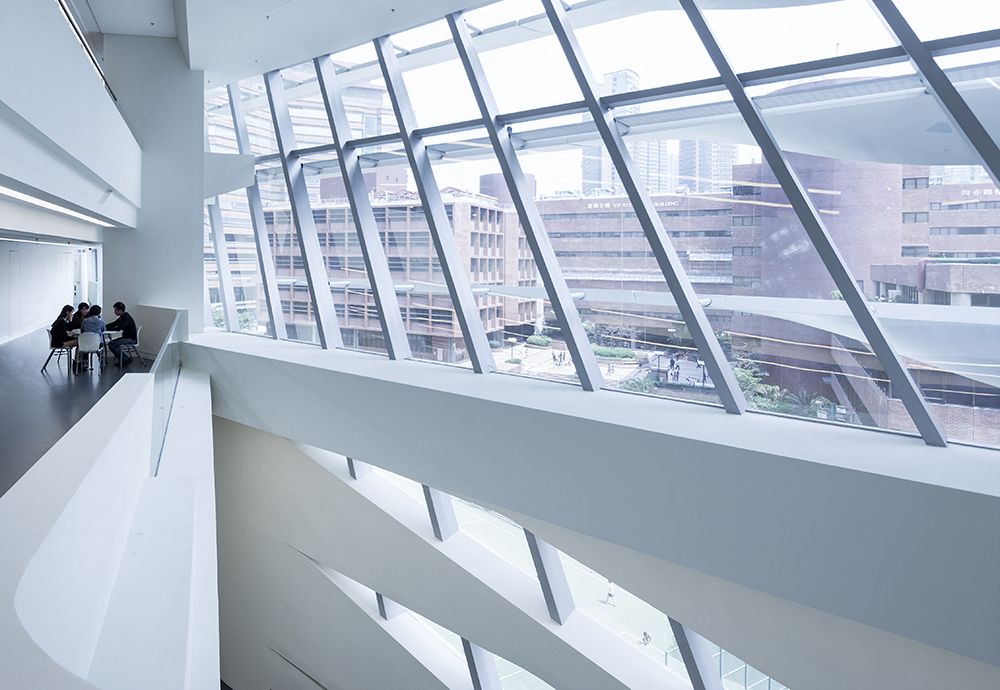
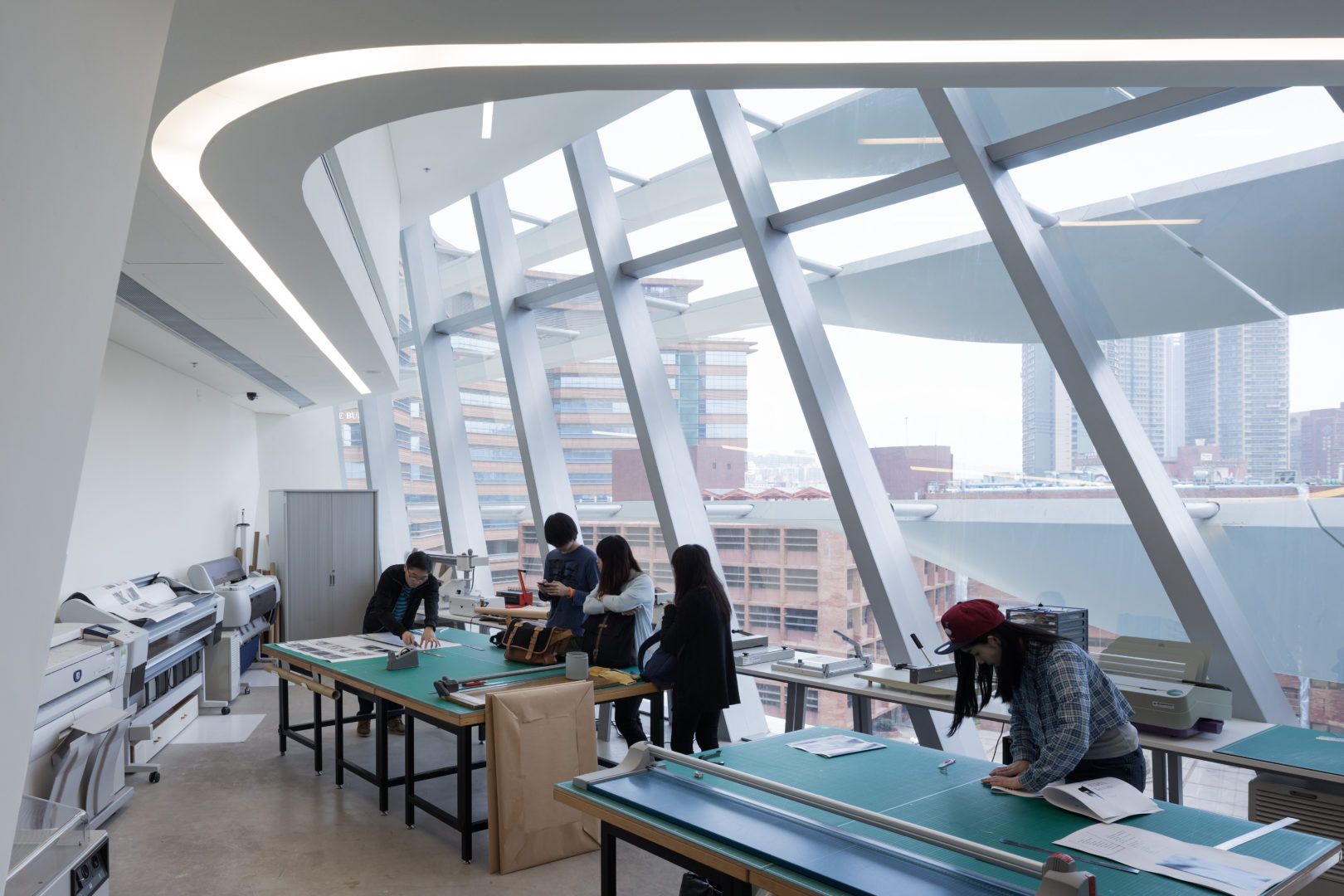
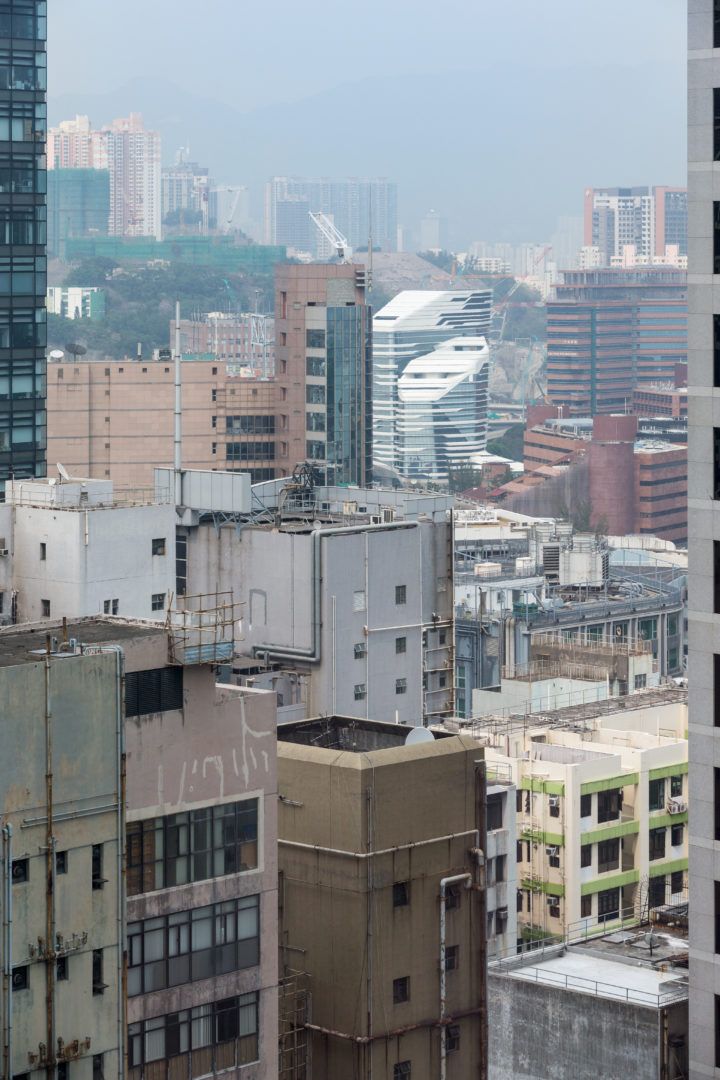

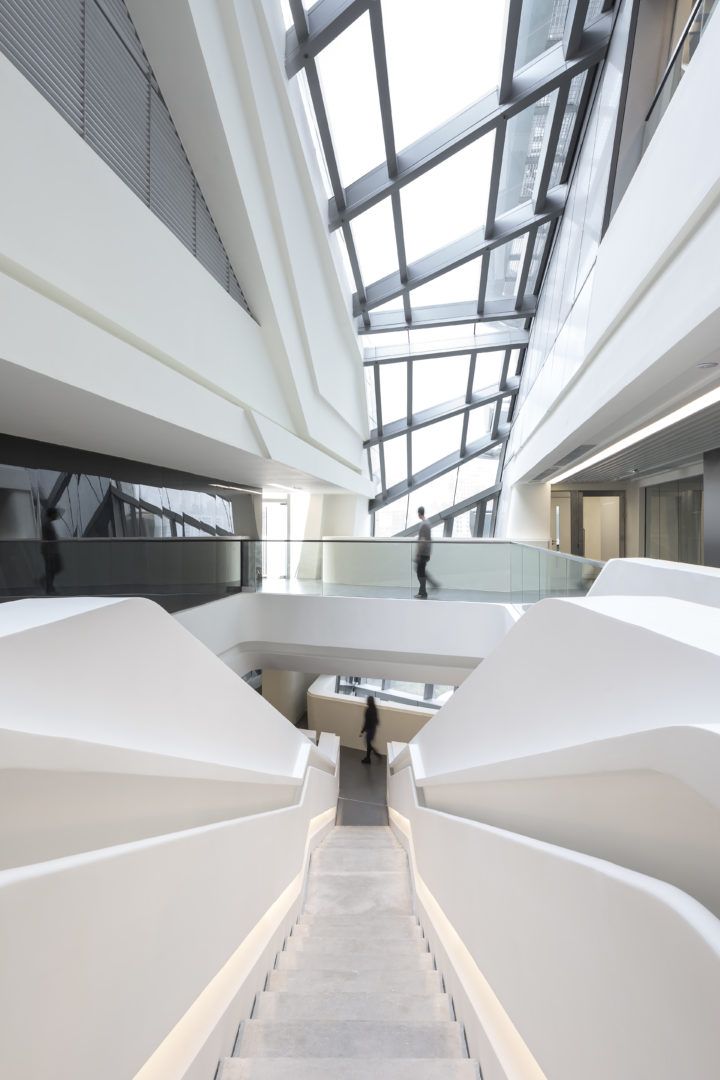
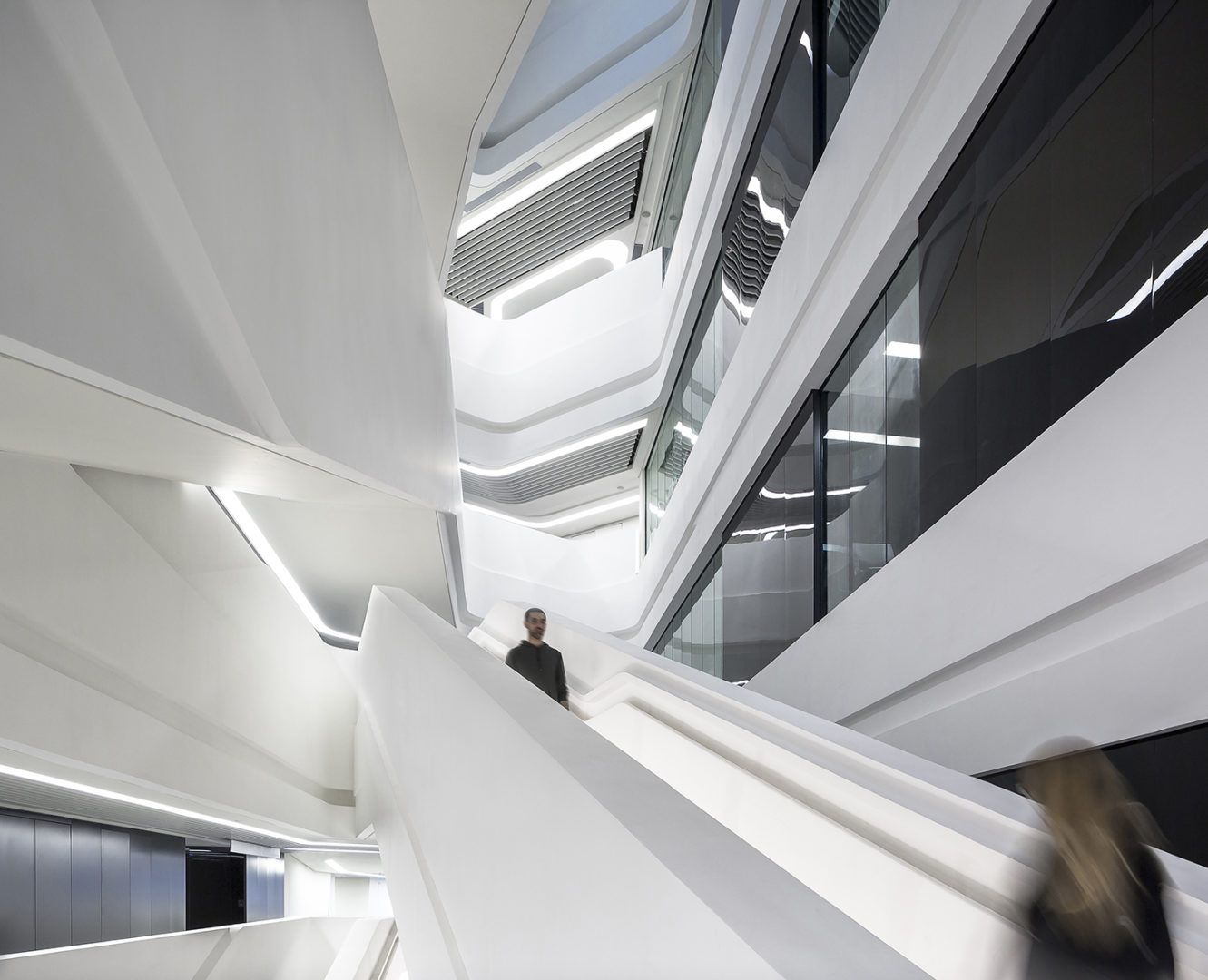

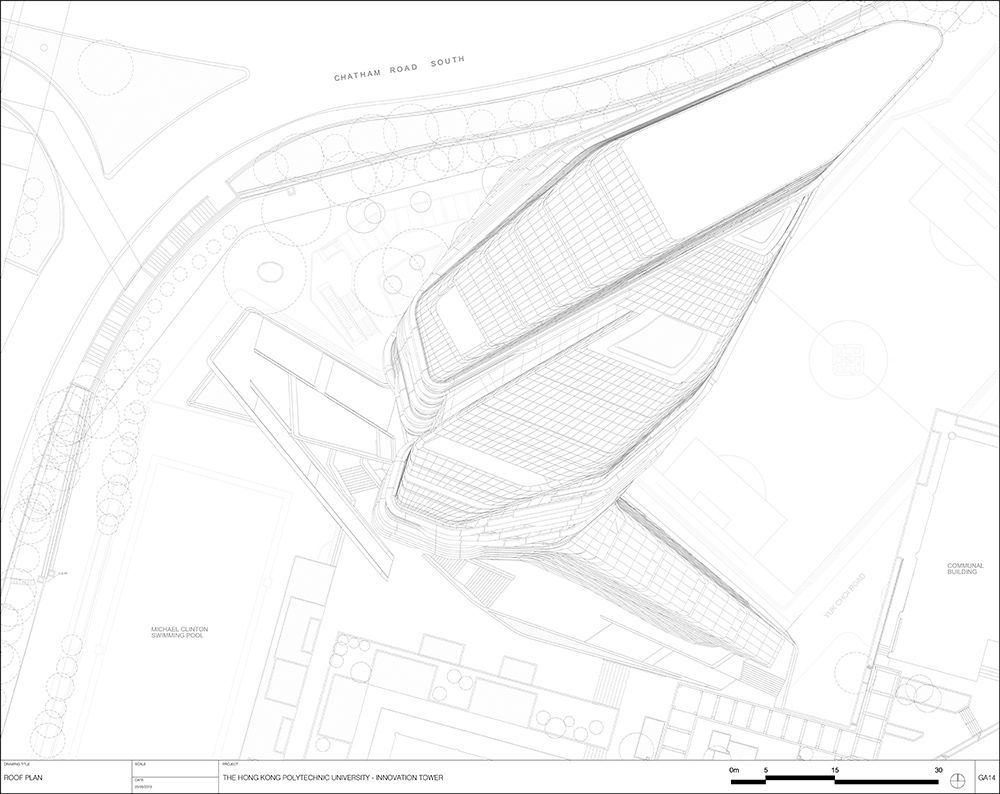
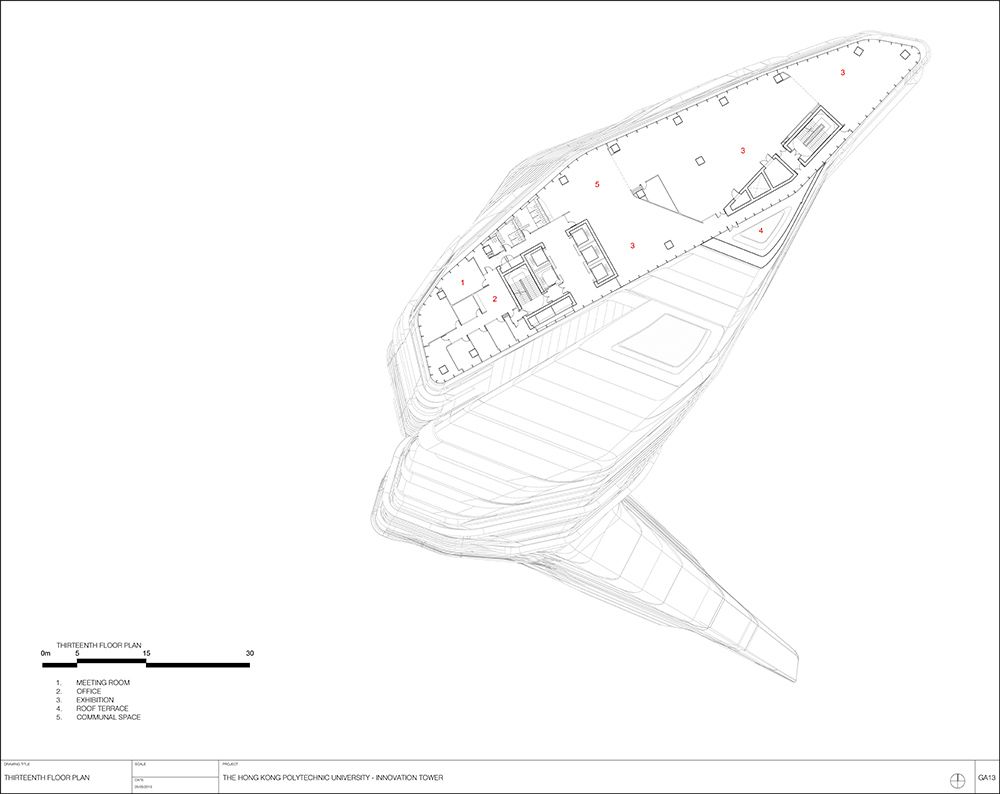
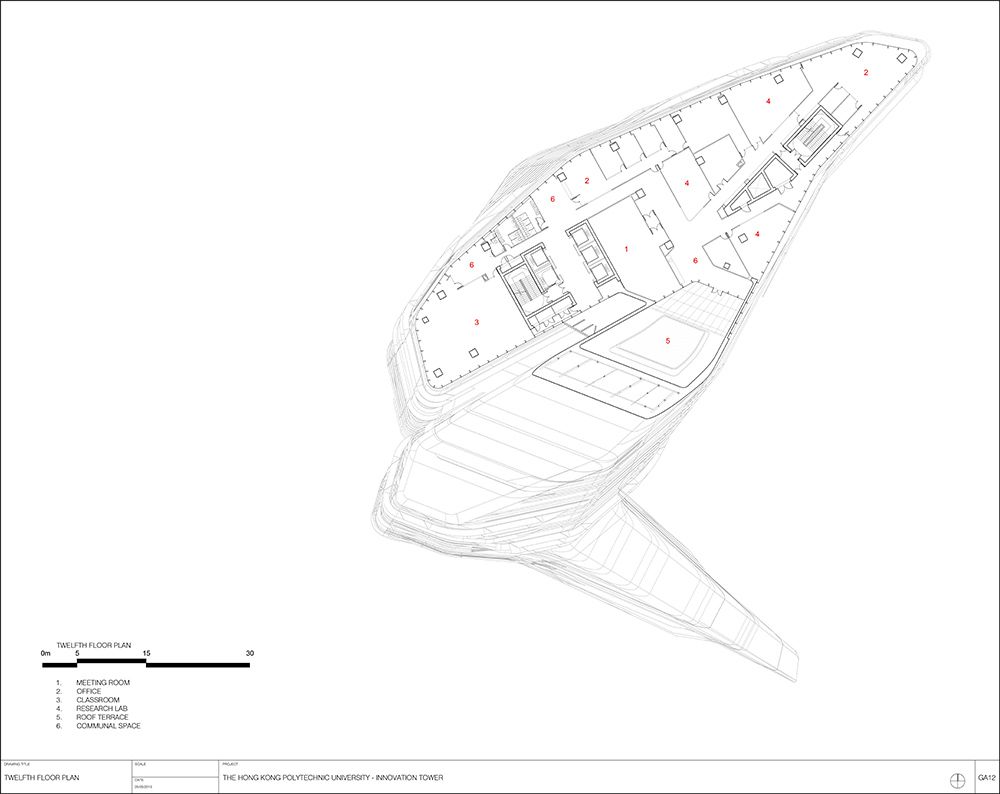
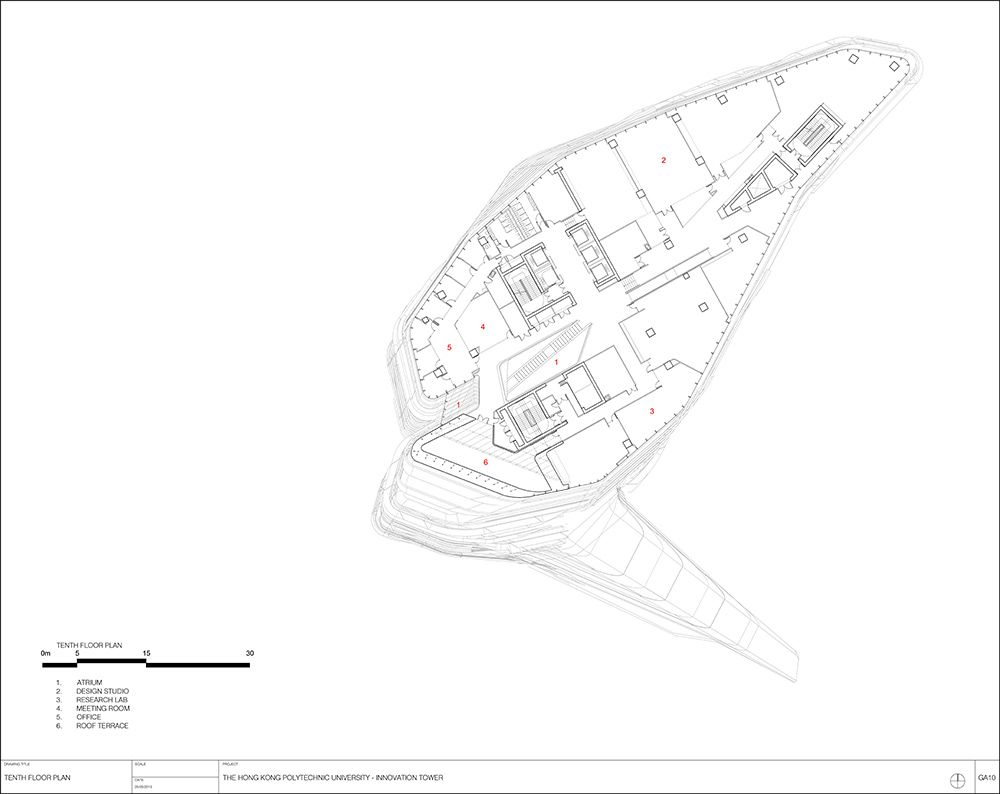
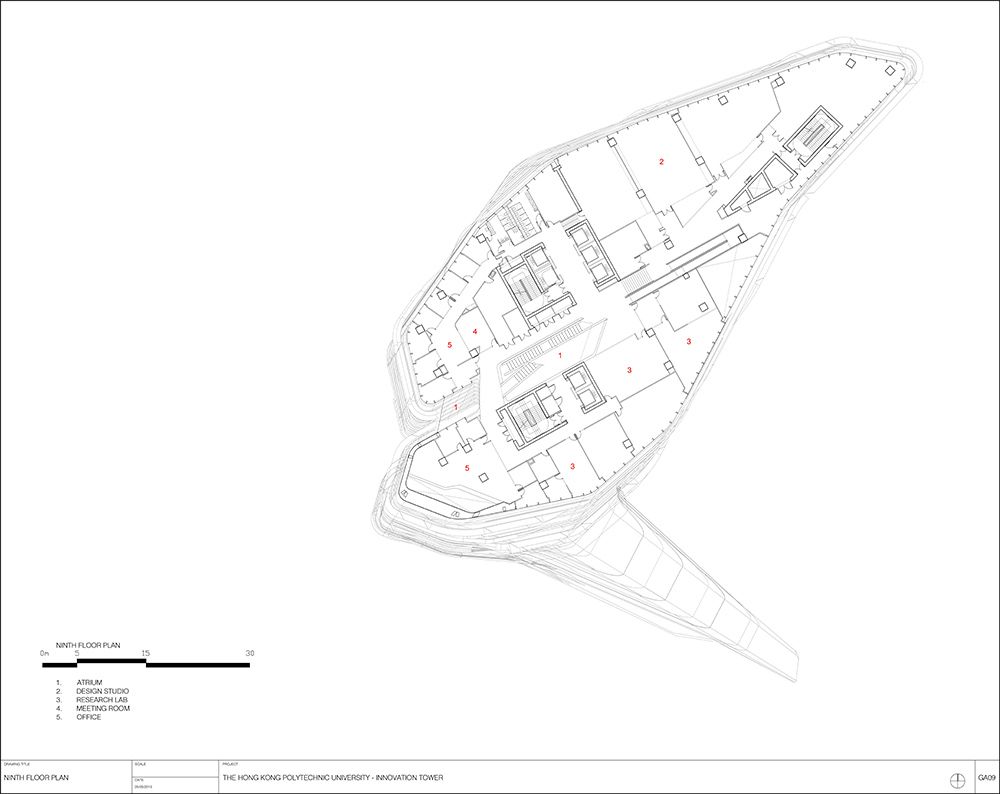
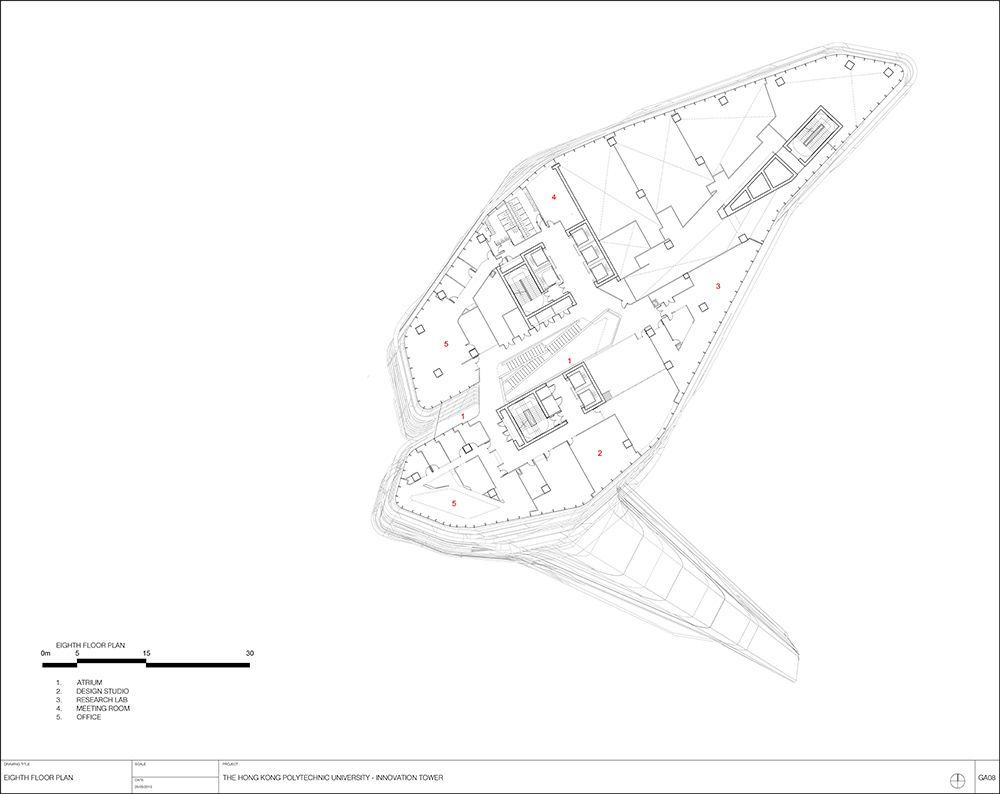
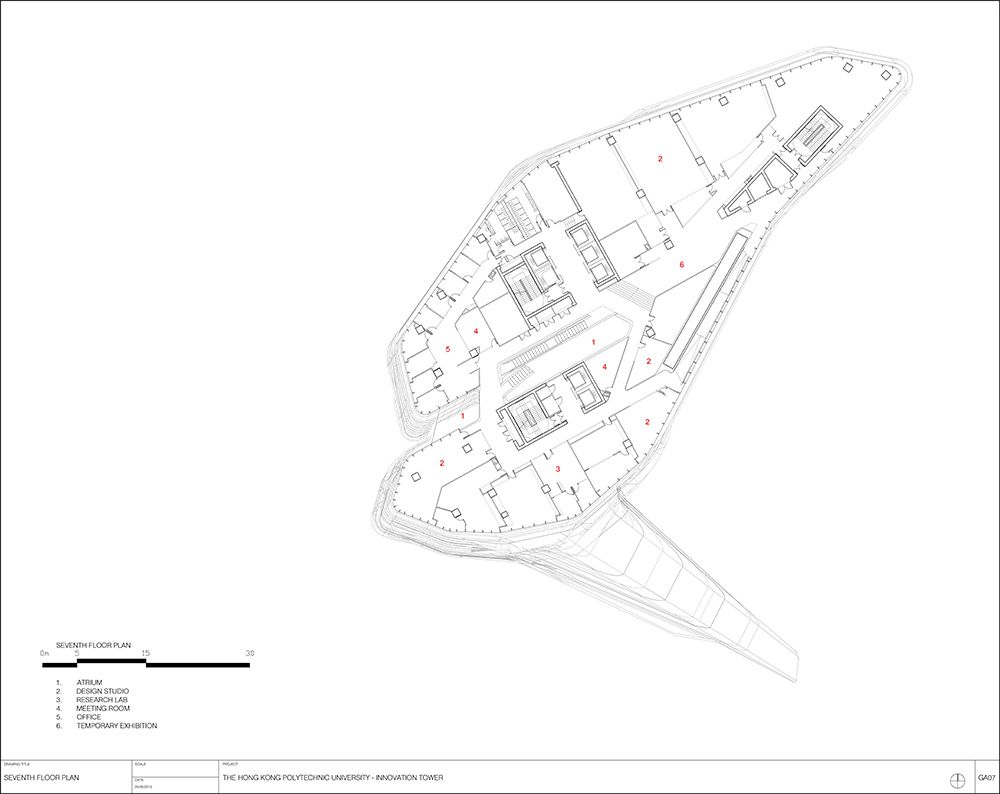
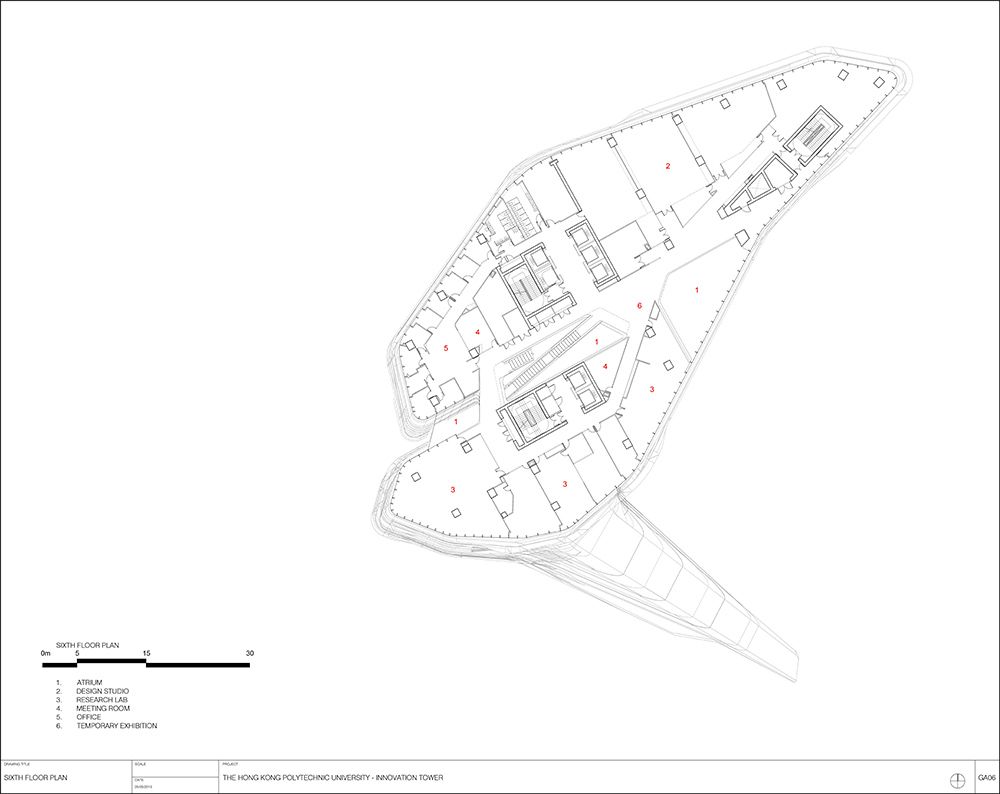
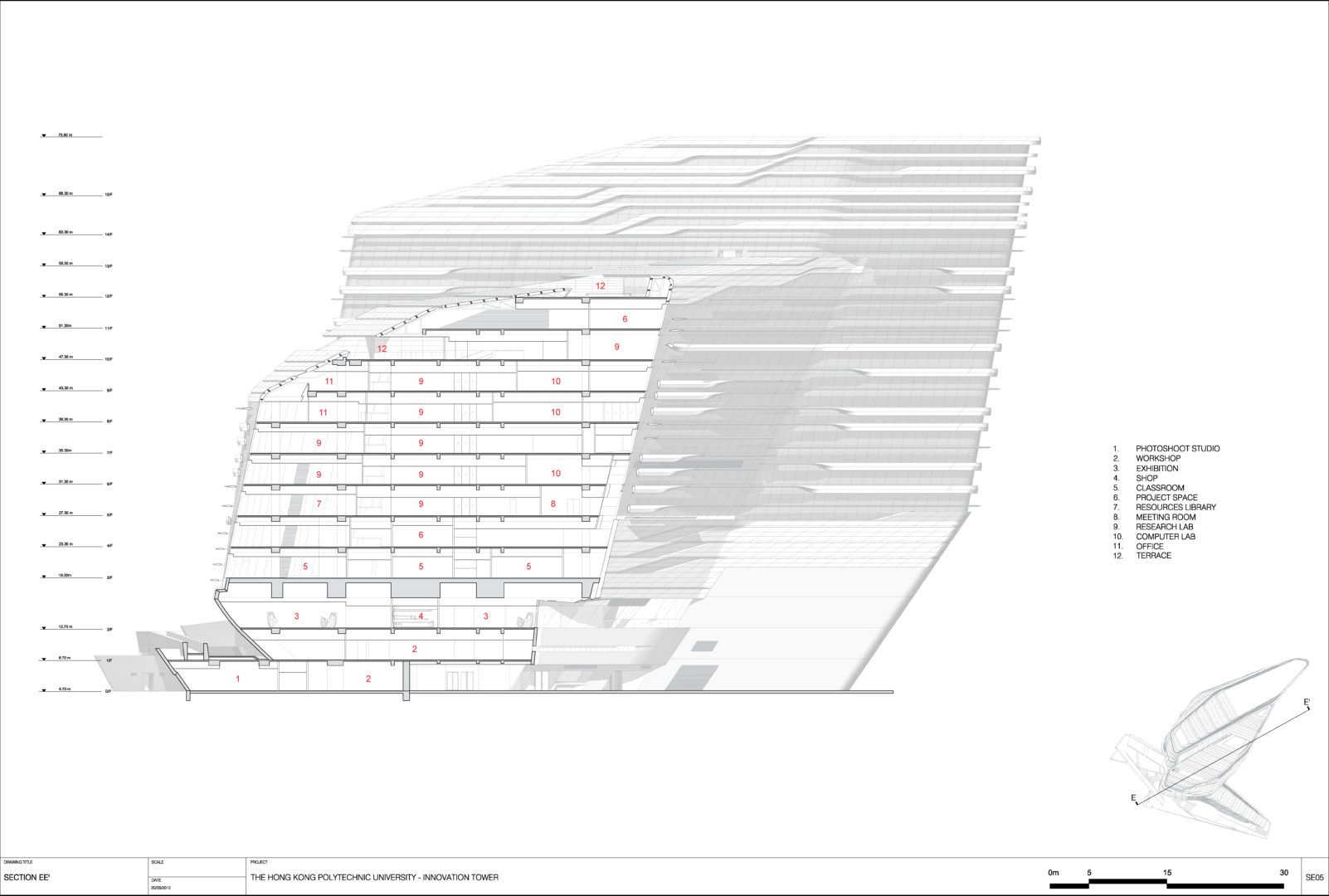
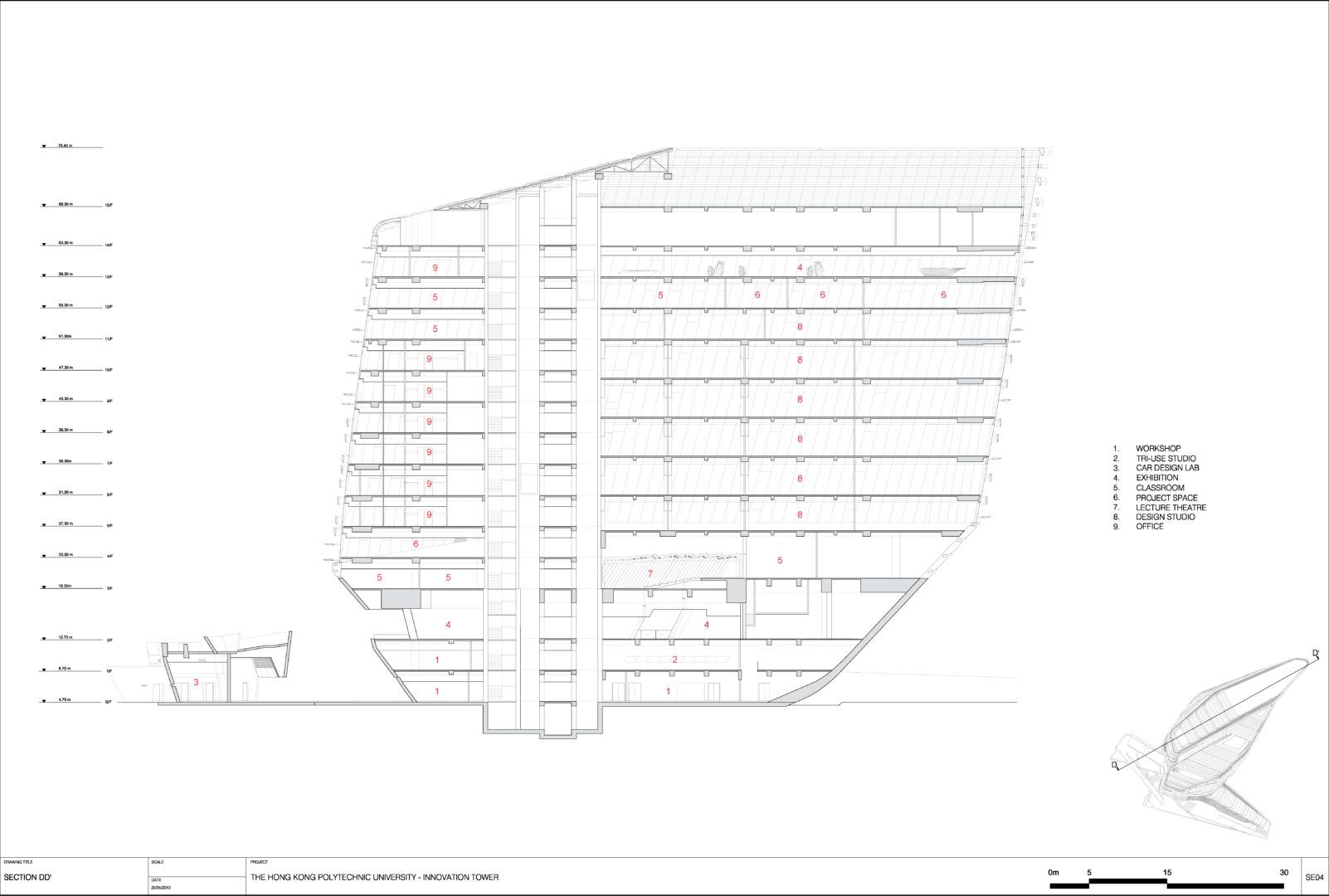
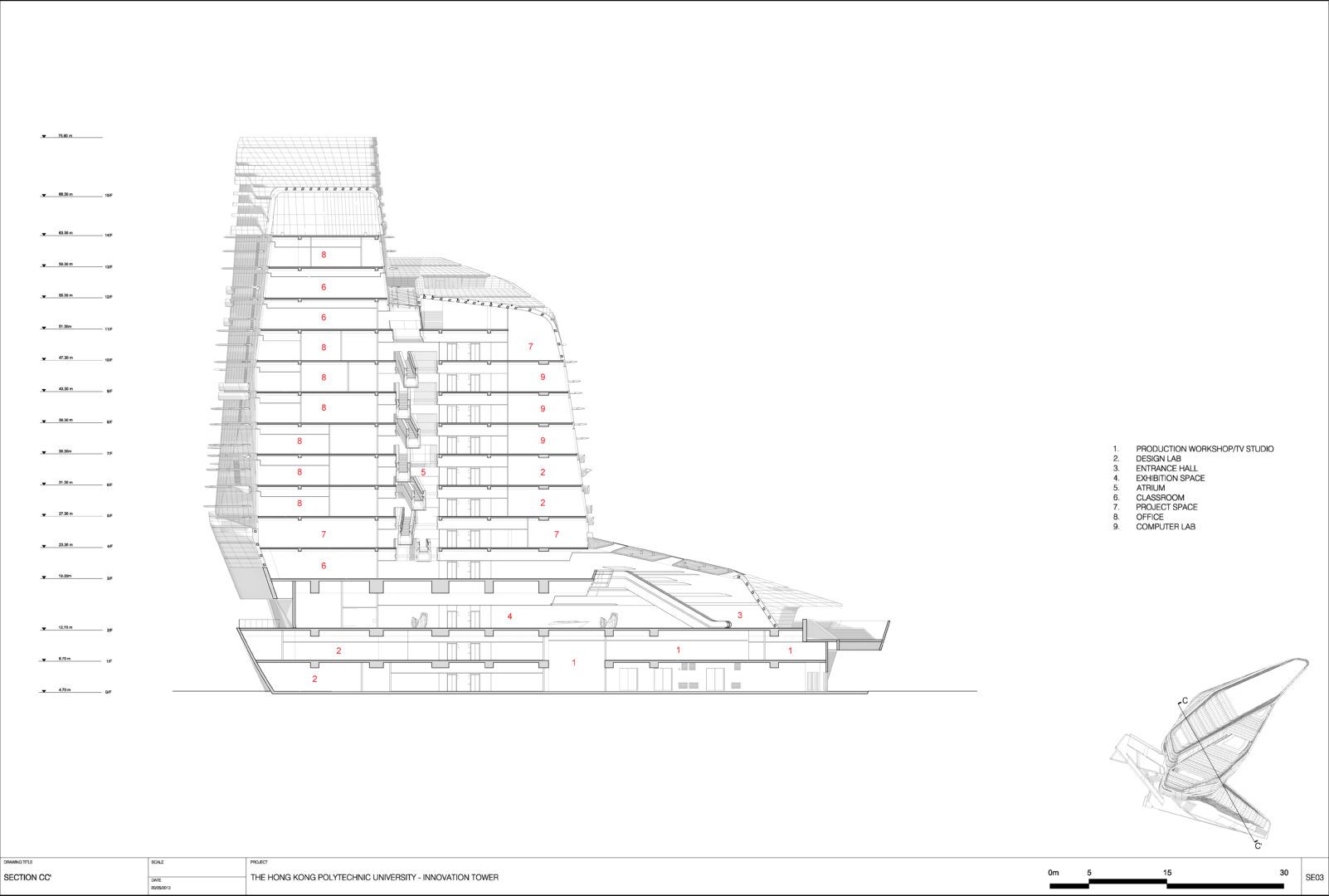
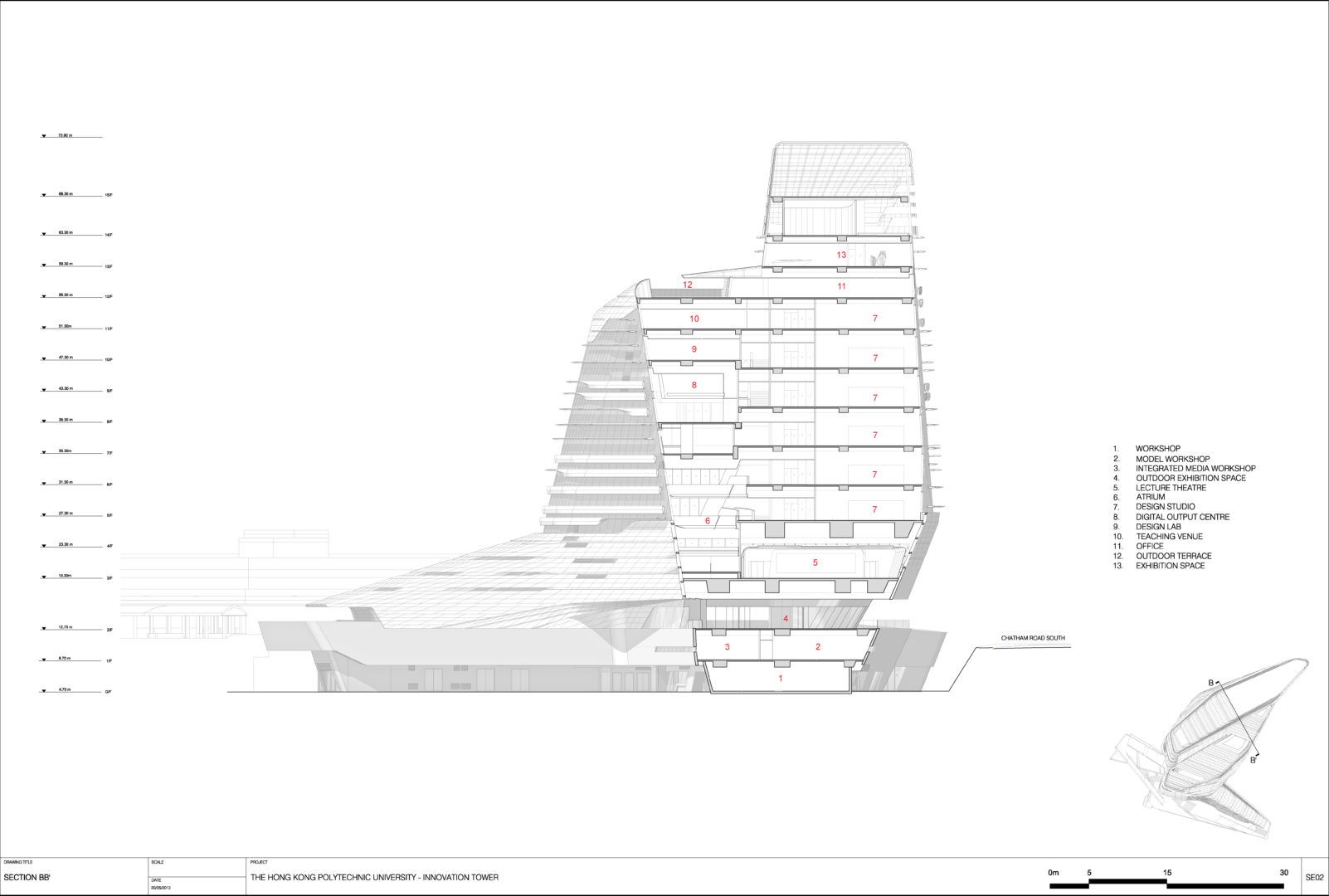
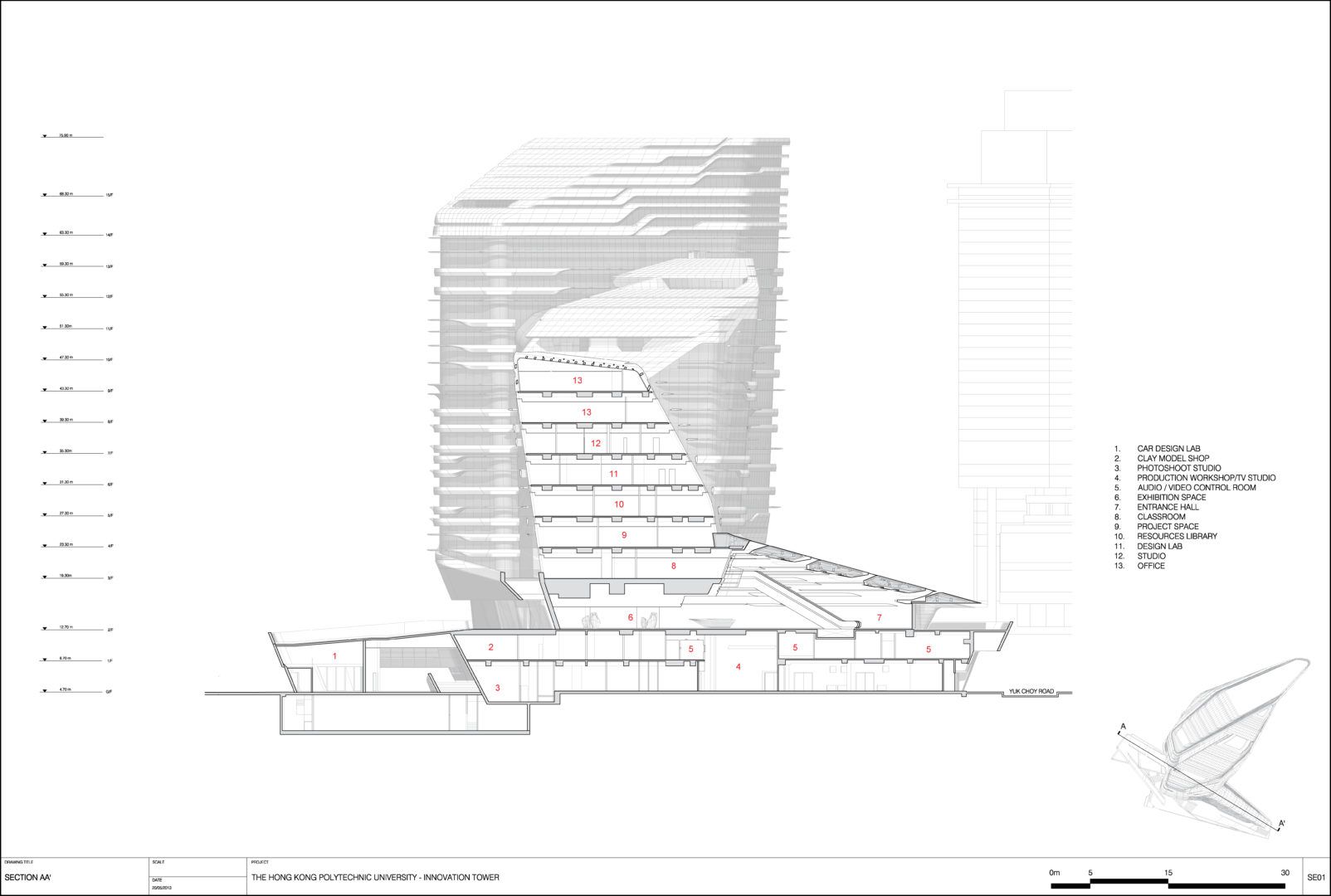
Project Info:
Project Year: 2014
Architects: Zaha Hadid Architects
Design: Zaha Hadid, Patrik Schumacher
Project Director: Woody K.T. Yao
Project Leader: Simon K.M. Yu
Photography: Iwan Baan, Virgile Simon Bertrand, Edmon Leong, Doublespace.
Location: Hong Kong, Hung Hom, The Hong Kong Polytechnic University, Jockey Club Innovation Tower 賽馬會創新樓

